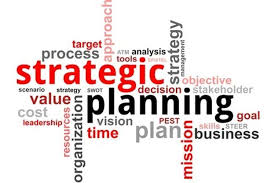Virtual Strategic Planning | Leap Solutions Group Inc
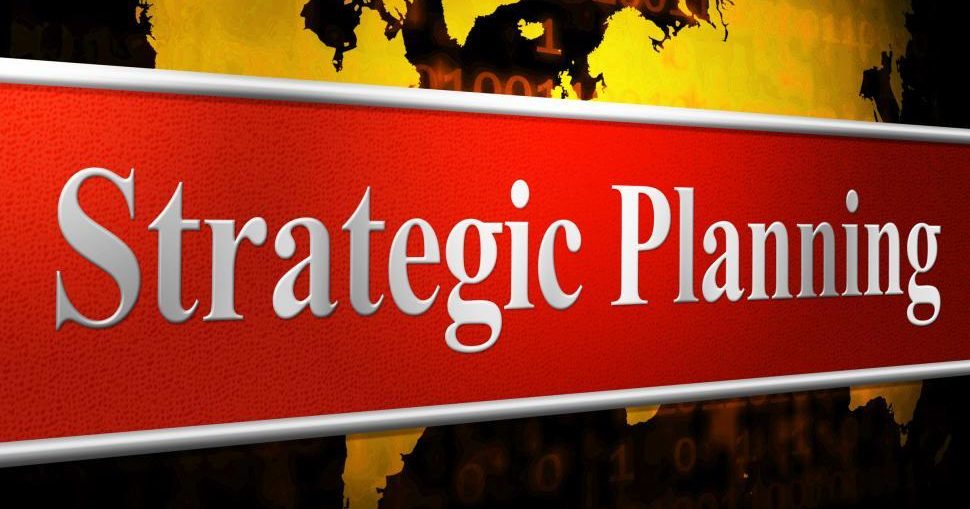
[NOTE: Leap Solutions Group is presenting a webinar for the California Special Districts Association on Tuesday, September 1, 10-10:30 am on the topic of virtual strategic planning. If you’d like to join us, here is the link to register for the webinar:
https://members.csda.net/imis1/EventDetail?EventKey=WEBI090120]
During the current COVID-19 pandemic, every day brings new information, concerns, and challenges regarding the spread of the virus, its economic and social impacts, and government directives. Leap Solutions remains dedicated to keeping you informed and empowered by delivering relevant, up-to-the-minute information and resources.
Our organizational development specialists are here to help support you with your online strategic planning, team development, executive coaching, training, program evaluation, and community engagement. Essentially, we can convert anything that you need in support of your business to a virtual experience. You still want to accomplish your plans, goals, and outcomes. We are here—virtually to help you achieve them.
In this issue of our newsletter we will cover:
- Why strategically plan virtually?
- What has changed in the virtual planning approach?
- Questions about the virtual planning approach.
- Are You Ready to Leap?
Why strategically plan virtually?
When the pandemic hit in mid-March, we were in the midst of numerous client strategic planning processes, with more about to start. Reaching out to our clients, we asked, “What are your thoughts regarding the next steps in the strategic planning process?” The answers ranged from Let’s put it on hold for a bit to Let’s move forward. However, how can we move forward in light of sheltering in place?
Great question, since every business in the world was struggling with how to complete work in progress or launch new business activities. Being Leap Solutions, we put on our solutions hat to dream up a virtual way to a strategic plan.
With the typical, in-person strategic planning process, we’d convene a group of our client’s leadership team to dream up the process, determine how to engage stakeholders, assess the environment scan (the tracking of internal and external trends and occurrences that bear on its success, currently and in the future), identify planning participants, set the planning timeline, and reach agreement on the scope of work. We followed this with numerous on-site planning team meetings, retreat facilitation, data collection and processing, values and mission reviewing, vision setting, priorities and goals identification, tactics focusing, and plan, document, and implementation map creation–all core activities to a living and implementable strategic plan.

What has changed in the virtual planning approach?
- What and How – Not the process but how Leap would accomplish this new approach.
- Why – As we planned for the shift, we also discussed the why, as we considered the impact of the pandemic and whether a strategic or operational plan was needed.
- When and Who – The when was all about the project timing, and the who dealt with the people available to support the planning process.
- Where – The where, of course, was all virtual.
This initial conversation about the famous “W’s” and “H” was very strategic as well. Mid-March was not a great time for organizations to pick up or start their planning process, as businesses were focused on their employees, business sustainability, the viability of current strategies, and even survival. As the world moved into April and we became clearer on how government programs, such as the Payroll Protection Program and SBA emergency loans, could support business, our current and new clients responded with next-step questions.
Questions about the virtual planning approach.
The following are some of the top-of-mind questions we received, along with our answers. As consulting thought-leaders, we had to answer these great questions from our clients both creatively and with the mindset of a new frontier for strategic planning.
Should our planning be strategic or operational in light of the pandemic?
To answer this question, we asked a question back. What is the current state of your business and what, in your estimation, is the impact of the pandemic on your business strategies? For some, it was uncertainty and layoffs or furloughs with COVID impacts, for still others it hopefulness, emerging opportunities, and adapting old practices to new strategies. These were just a few of the responses. Based on the response, our guidance was to challenge the traditional mindset by asking if the pandemic was providing opportunities not yet understood. For instance, listening to our clients in early April, we heard of organizations changing their business model, moving from in-office to home office operations, reaching out to customers to understand their emerging needs and adapting services for them, and organizations exploring their current product or service offerings, and even adding new services. We saw clients implementing a quick adaption process being ready and adjusting rapidly. Readiness for planning determined if operational planning or strategic planning was best at the time. Some clients shifted to operational and put strategic planning on hold, while others did a combination. Impacts on their business model and readiness to shift, if needed, helped drive the planning approach.
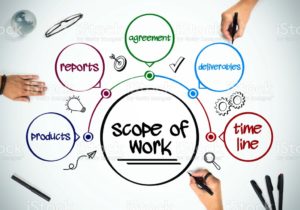
What components of the scope of work need to be modified in the virtual planning approach?
Initially, we identified the timeline as the first component to discuss. We wanted to reach an agreement on whether or not a shift of timeline was needed due to urgency, availability of participants, and other business priorities.
We evaluated data gathering and analysis for the environmental scan to see if we could still utilize our intended approach: surveys, stakeholder interviews, World Cafés, and other information-gathering convenings. Our adaptable clients were intrigued by a virtual approach. While online surveys are not different in our new world, we could improve, stakeholder interviews with more people adapting to online meeting tools such as Zoom or Microsoft Teams. With the stakeholder interviews in the non-COVID world, we’d typically arrange to meet them in their office or speak over the phone. In the COVID world, the improvements we discovered from an online meeting included a more intimate connection as the participants are in their homes, with time on their hands and a willingness to participate. And this type of connection there is a greater chance to engage as you get a better understanding of them and what is important to them. Stakeholder input is invaluable because they are most invested in the success of your organization with a strong interest in the outcomes and the impact in their lives.
The other challenge was conducting a World Café and seeing if we could address engagement with online meeting tools that allow for breakout rooms, polling, and other facilitation tools. We suggested online tools such as Groupmap to provide group discussion and instant recorded feedback (voice or data). We love that the Chat Room and video recording features help us retain and document our data. Automated data gathering helps immensely as we dissect and report on the data. World Cafés are very adaptable to the online environment with these tools, however, the dialogue is what shapes the data gathering as the tools are simply tools.
Within days, we found that all components of the planning scope of work could be adapted in the virtual world. Some processes, such as data gathering and participation levels, even improved as we quickly acknowledged and accepted that the barriers of an online experience due to the limitations to gather in person did not change the desired outcome.

As for stakeholder involvement, should we look at a smaller level of participation? What tools should we use? How will we get their feedback? How can we sustain their engagement?
The first question is how many stakeholders do you want to engage and at what level of active input? Are your stakeholders widely dispersed (even over time zones)? How do the identified stakeholders provide value to your planning process? What is the best outcome you can imagine from the stakeholder participation? These foundational questions allow you to set the stage to achieve your desired outcomes for stakeholder participation.
Once we know the conceptualize the stakeholder participation, we can assess the number of desired stakeholders. Smaller is not necessary, as with online tools it is fairly simple to engage a larger number of participants. Surveys and online interviews can easily be conducted. World Cafés require a larger time commitment but can be streamlined with online convening tools. In comparison with the logistics of an in-person gathering of stakeholders, the online tool logistics are less complicated for the organizer because your command center is your laptop or desktop and can be accomplished from anywhere without travel.
As outlined in the tools section below, there are a vast number of online tools you can use to gather stakeholder feedback. You can address a stakeholder’s familiarity with the online tool with pre-session workouts to acquaint them with the tool. To support the convening, you can appoint a co-facilitator or meeting producer whose role is to handle all the logistics of the online environment such as admitting participants to the meeting, monitoring the Chat Room, setting up and launching the breakout rooms, running the Powerpoint presentation, muting and unmuting, all to ensure a smooth, flawless meeting execution. While in session, the co-facilitator can even support the orientation to the online tools in real-time. This support role also includes troubleshooting, covering technical blimps (like your Internet service hiccupping), recording the session, and timekeeping. Even in large groups, such as the large community business group we participated in with over one hundred participants in the general session and breakout groups, the engagement can be very strong with the right tools, well managed.
While the online engagement can provide instant stakeholder feedback using such tools as polls, breakout rooms, and convening software, we also recommend post-session feedback, with verbal feedback at the end of the session or an online survey. The questions should be short, direct, and aligned with planning objectives. You want to respect the time commitment of stakeholders and make it easy for them to give feedback. Showing appreciation for their time as well as sending them post-meeting information are simple acts to value their time and contributions.
Finally, engagement is most dependent upon how you set up the interaction. Make it simple, easy, and rewarding. Less is more should be a driving principle to your engagement. Efficient questions, clear data, and accurate reporting reward your stakeholders for their participation. Again, in COVID, we are seeing a high level of willingness from stakeholders to participate and make a commitment to the process.
With one international, professional group, we see participants from many corners of the world, all managing to COVID and wanting a sense of community and interaction. Engagement is high and maintained through both small and large group participation. The breakout rooms of international colleagues have a common thread of people wanting to connect, share their experience, learn from others, and apply it to their environments. We find a high level of experiential learning and the willingness to try new things to support engagement.
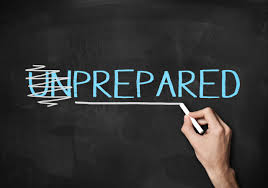
Our priorities are shifting under COVID. Should we plan for this shift over the life cycle of the plan? Should we have a priority focused on COVID or a theme throughout? How can we reflect on a rapidly changing pandemic situation in our plan?
If we look into the crystal ball of our future, it would seem that our state of COVIDness is not going away anytime soon. Listening to the epidemiologist experts, this virus and the needed vaccine is 12-18 months in the making. It seems likely that it will be with us throughout 2021 and perhaps into 2022. We don’t know for sure. What we do know is its impact right now. Major companies have already announced work-from-home strategies for their workforce through the end of 2021. For your organization, the question of the impact of COVID over the life of your plan is important to address. We are currently recommending that organizations consider it a major environmental impact that will affect the organization for at least two years, and should be a component of the plan over the plan duration.
During the priority and goal identification of the strategic plan, COVID should inform the planning. For instance, if you are exploring how to drive your business development or new product/service offerings, you should consider the impacts of COVID. Are you seeking new customers or do you want to secure more business from existing customers? What are the unique opportunities due to COVID? What are the limiting factors? What innovative approaches can you consider? One of our clients was reviewing the state of their plan one year into its implementation. The client was wondering how to secure new business. We discussed innovative, creative solutions such as hosting webinars on the topic of best practices in their industry and how they are applying those practices to projects that need modifying due to COVID protocols. Another client who is in the midst of their strategic plan determined that marketing and communications need a higher profile because the audience they serve is a group of high school students and without the student presence in the classroom, outreach is more difficult. They are exploring online convenings to hold information meetings about services, engage with school counselors, and ensure the students know they are here to help.
Another topic was team retention and engagement during the shelter in place. To help our clients, we analyzed past team engagement activities and looked at adapting them to online. These discussions evolved into the incorporation of COVID realities into their living strategic plan over the next two years. The bottom line: it is best to integrate COVID into all aspects of your current strategic as well as operational plans.
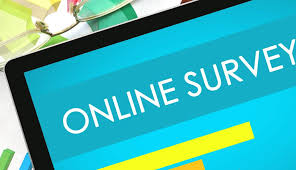
What tools are available to conduct the planning process with a dispersed and virtual team?
As teams adapt to the virtual, online planning environment, available tools are prolific. Online group facilitation and convening tools have existed for years. Leap has used Facilitate.com for many years to convene large and small groups to build consensus and drive business decisions. Groupmap is another example of a convening tool. No matter the tool, the concept is the same: state a question, gather input, theme ideas, prioritize ideas, and reach consensus. Online tools also allow for onscreen and offscreen chats, breakout rooms, polling, and whiteboards. Google Jamboard is a collaborative digital whiteboard that allows a group to deep dive into a concept in real-time. You can use it as an online post-it note brainstorming tool, as well as to reach a consensus on ideas. A key to success with the many tools available is to master the tool and train participants in how to best use it for their planning process.
With the foundation of an online interactive program such as Zoom and Microsoft Teams, the complimentary tools support the group dynamics of in-person gatherings. While technology can be a barrier for some participants less savvy with online experiences, pre-meeting workouts with participants can address the barriers. Helping all team members feel comfortable with the tools reduces the technology bias and can even up the participation field.

Can we still finish this plan within our desired timeframe?
The answer clearly moved to YES that we could accomplish the planning process in the desired timeline.
With the plan participants working remotely, we found that scheduling the meetings is much easier, particularly when we have the scope of work and planning timeline well defined. It allows the client’s team to set all the convening dates in advance and sketch out their planning assignments between meetings.
The planning schedule can work best with up to two-hour meeting blocks. As the facilitator, Leap manages the agenda, runs the meeting convening software, takes notes, keeps to the timed agenda, and ensures all team members are participating in the process. We have also learned that reaching the timeline goal means scheduling the planning meeting every two weeks, which allows for the planning assignment to be completed between meetings.
We have been conducting strategic planning processes for nonprofit and special district organizations during the pandemic. When working with a group of volunteers, the learnings have been very similar in how the planning is accomplished. As volunteers are employed or even active retirees, they appreciate a set, consistent time to convene, along with a well-defined agenda to ensure progress. When we planned the approach with one nonprofit, we had initially planned for a one-day retreat to launch and execute most of the planning activities. Then COVID-19 interrupted this concept and we moved to four two-hour online convenings, with a shorter retreat at the end of the process. Another client moved to seven two-hour meetings, followed by two short retreats to present and then finalize the plan.

Are You Ready to Leap?
Now is the time to strategically plan virtually. Not to plan is to allow life to just happen and to respond reactively. Moving the process virtually requires additional planning and a shifting of the logistics, but the outcomes match what we can accomplish with in-person planning. Think about shifting your planning process to the online world. Are you ready to Leap?
***
Leap Solutions is a diverse group of highly skilled management, organizational development, and human resources, and executive search and recruitment professionals who have spent decades doing what we feel passionate about helping you feel passionate about what you do. Our HR specialists can help you get a handle on the ever-changing COVID-19 guidelines, programs, and legislation that may impact you and your employees. We are available to work with you to develop practical solutions and smart planning decisions for your organization’s immediate, near, and long-term needs.
To print this article, click here

![]()

